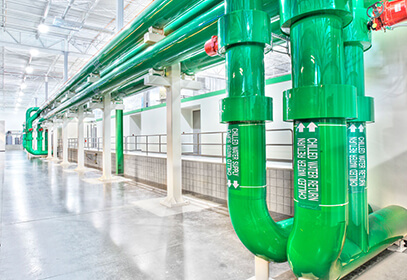Resources
ANSI Articles
Understanding OSHA/ANSI First Aid Kit Requirements
Everything you need to know about first aid kits, where they go, their contents, and why OSHA and ANSI requires them in every workplace. …
Guide to ANSI/ISEA Z358.1
ANSI/ISEA Z358.1 is the OSHA-enforced standard for eyewash stations and other equipment used to treat the eyes, face, and body of workers who have been exposed to hazardous materials. …
National Electrical Code (NEC)
The National Electrical Code (NEC) is the ANSI/NFPA-approved standard for safe electrical installation. The NEC is revised once every three years, with the most recent changes in 2017. …
Arc Flash Label Requirements [2018 Updates]
Arc flash hazard labels must be placed on any piece of electrical equipment where workers might need to perform work while the equipment is still energized. …
Your Guide to Pipe Labeling Standards
If you are looking to implement or update a pipe marking strategy for your facility it is important to gathering as much information as possible. Read More... …
OSHA Sign Compliance: ANSI 1967 vs. ANSI 2011 [With 2017 Updates]
OSHA regulations require businesses to follow one of two safety sign standards to remain in compliance: ANSI 1967 and ANSI 2011. Take a look at these two styles and pick the one that best meets your needs. …
A Guide to Pipe Marking Standards
For most industries, abiding by ASME/ANSI pipe marking standards is sufficient for staying safe and OSHA compliant. Some workplaces, though, are required to comply to more unique pipe marking standards due to the nature of the substance the pipes contain. …
ANSI TIA 606-B Cable Labeling Standards
ANSI TIA 606-B Cable Labeling Standards are a unified labeling method for the wires used in computer systems. These standards help businesses record data and keep their IT environments organized. Get to know these standards; they’ll help your business run more efficiently. …
ANSI S3.19 – Noise Reduction
In most facilities there is no way to eliminate dangerous levels of noise, so it becomes necessary to wear hearing protection. Hearing protection is regulated by ANSI S3.19 standards. …
Hard Hat Classes [OSHA & ANSI Standards]
Each hard hat class is designed specifically to help provide protection against certain types of hazards. Learn about hard hat classes to ensure the right hats are used to keep everyone safe. …
ANSI/ISEA Z87.1 Standard [Eye Protection + Safety Glasses]
ANSI Z87.1 focuses on safety glasses and helps employers and employees make decisions that can help protect people’s eyes and face from a variety of threats. …
ANSI Color Codes for Pipe Marking
When following the ANSI A13.1 standards, the most important thing is to understand the six most common color schemes. …
Labeling Electrical Conduits
Learn how to label electrical conduits so employees can quickly identify them. …
Safety Colors (OSHA Guidelines and Color Codes)
Using colors strategically makes communication in your facility more effective. Get the details about common color codes. …
ANSI Z535 [Updated Guide to Safety Signs & Labels]
An in-depth look at ANSI’s standard for safety signs and labels in the workplace. …
Pipe Color Codes - ANSI/ASME A13.1
The ANSI/ASME A13.1 pipe marking color code explained. …
What are ANSI standards?
The American National Standards Institute makes guidelines that could impact your workplace. …
ANSI Questions and Answers
How does ANSI compliance ensure Safety and Quality?
The American National Standards Institute (ANSI) establishes guidelines and regulations that encourage consistency and safety across various sectors. They create benchmarks that help organizations meet quality, safety, and performance expectations, creating standardization through their implementation across a wide range of industries. When a business adheres to ANSI standards, it can help lead to legal compliance,… …
Are ANSI and ASME the same?
There are countless acronyms in the safety world which can cause a little confusion on which is what. One of those questions is whether or not ANSI and ASME are the same thing and if they cover the same subjects. The American National Standards Institution (ANSI) and the American Society of Mechanical Engineers (ASME) on… …
How do ANSI classes relate to PSI?
There are different ANSI/ASME classes that designate the pressure rating of flange connections for pipes with contents under pressure. Flanges specifically use ANSI classes rather than referencing PSI, they are different because they use bolts as fasteners rather than a threaded means of connecting pipes. While these ANSI classes can often be seen on some… …
What are the steps to get ANSI certified?
Becoming ANSI certified is no easy business. There are several steps that the applicant or certification body must complete before they can be awarded those sought-out credentials from an accredited entity like the ANSI National Accreditation Board (ANAB). The ANAB happens to be the largest accreditation body that covers multiple areas of expertise in North… …
Where can I find ANSI standards?
ANSI standards can be found everywhere you look. As an organization that facilitates the creation of safety standards by accrediting Standard Developing Organizations (SDOs), they have been able to gather thousands of expertly advised guidelines from all kinds of companies, businesses, and government agencies. These SDOs are invested in creating a safer working environment for… …
Which countries use ANSI standards?
ANSI is also involved in the international side of standards on top of their normal responsibilities within the United States. They currently work in tandem with over 150 countries’ national standards and conformity assessment bodies similar to ANSI themselves. These are all spread out through the Americas, Africa, the Middle East, Europe, and Asia. Key… …
Why is ANSI important?
When considering all the safety measures that facilities and large manufacturing companies must adhere to, there can be an overwhelming number of regulations to follow. ANSI’s well-known standards are clear and concise and also voluntary (unless they are required by OSHA). ANSI’s voluntary standards are considered to be the golden standard for virtually every safety… …
Who enforces ANSI standards?
ANSI is very peculiar because it is recommended that employers incorporate ANSI standards into the daily procedures and visual communication specifications of their company, yet most of ANSI standards are voluntary. The standards themselves are seen more as excellent reference material for anyone who would like to take advantage of them regarding the betterment of… …
Who do ANSI standards apply to?
ANSI standards are created to be applicable to those who create commercial, industrial, and consumer products. When asked about who exactly the standards apply to, it must be noted that ANSI standards manifest themselves in every aspect of procedures, best practice methods, and end products. The standards are applicable to just about everyone, since there… …
Where do ANSI standards apply?
The American National Standards Institute has over 10,000 active standards that aim to create a safer environment for not only workers in various industries and their employers, but also other citizens going about their daily lives. ANSI standards are voluntary until OSHA decides otherwise by subsequently making those standards into law. In either case, the… …
What ANSI standards have been adopted by OSHA?
One of the few concrete ways that OSHA can enforce ANSI standards is if the standard was recognized as vitally important for safety measures by OSHA and then incorporated by reference. By doing this, OSHA has made the standard law, therefore providing OSHA the authority to penalize the offender if the regulation is disregarded. OSHA has… …
How does ANSI work?
As stated by ISO, The International Organization for Standardization, the definition of a standard is “documents established by consensus that provide rules, guidelines, or characteristics or their results.” ANSI is known for its numerous safety standards in existence, as a volunteer-based organization that facilitates the creation of national standards. ANSI doesn’t create the standards themselves,… …
What is ANSI certification?
The end result of a completed ANSI certification is proof of compliance with the accreditation standard ANSI/ISO/IEC 17024, which is also called the “Conformity assessment – General requirements for bodies operating certification of persons”. This certification is invaluable to those who receive it because it proves excellence from a successful accredited program in what that… …
How often are ANSI standards updated?
ANSI standards are revised more regularly than OSHA’s regulations due to the fact that revising regulations can be incredibly cumbersome and time consuming in comparison to revising voluntary standards. In fact, under the ANSI Essential Requirements, these standards must go through a reevaluation process to keep their validity with an accredited standard developer. This kind… …
Can OSHA enforce ANSI standards?
Since ANSI is a non-profit organization that accredits standards and not a government entity like OSHA, the standards put forth from them are generally not enforceable except for a few specific cases. In those few instances, OSHA can enforce ANSI standards which ultimately results in a more concrete understanding of what it means to be… …
What are ANSI colors?
ANSI’s Z535.1 standard depicts safety colors that should be used in any kind of public or industrial area. ANSI’s standard colors exist to better the environment around employees and visitors who may come into contact with hazardous material or dangerous situations, and have the general need for clear communication. If properly utilized, these colors are… …
How many ANSI standards are there?
There are an astounding 9,500 ANSI standards that have been created for the purpose of keeping people safe and well informed on proven best practices. These standards embody the best practice methods that ANSI has collected from accredited organizations all over the country from various different industrial backgrounds. Due to ANSI’s non-profit nature, these standards are… …
Are ANSI standards mandatory?
ANSI is a volunteer-based organization made up of industry representatives, policy makers, and technical experts that create and accredit standards which are proven to keep people safe from harm. However, ANSI is not classified as a government regulated organization like OSHA. This means that ANSI’s standards are mere guidelines as the organization has no weight… …
What are ANSI standards?
ANSI standards are guidelines for companies which are not enforced by ANSI itself since ANSI isn’t an official governmental operation. Official governmental agencies such as OSHA occasionally adopt ANSI standards into their regulations. That being said, these standards are 100% voluntary and do not come with any sort of legal punishment if they are not… …
What does ANSI stand for?
ANSI stands for The American National Standards Institute. This entity, created in October of 1918, has a 501(c)3 legal status allowing it to have the status of a private not-for-profit organization. ANSI is made up of voluntary members as either individuals (30 million professionals today) or large entities like governmental agencies, companies, academic and international… …

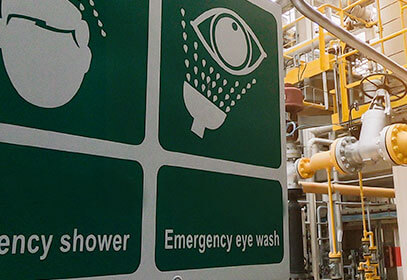

![Arc Flash Label Requirements [2018 Updates]](https://www.creativesafetysupply.com/content/images/articles/arc-flash-labels-th.jpg)
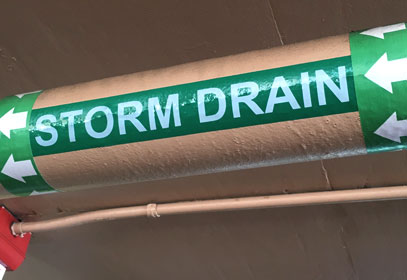
![OSHA Sign Compliance: ANSI 1967 vs. ANSI 2011 [With 2017 Updates]](https://www.creativesafetysupply.com/content/images/articles/ansi-sign-headers-th.jpg)

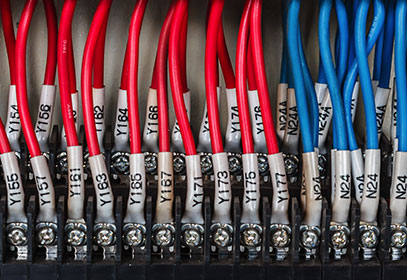

![Hard Hat Classes [OSHA & ANSI Standards]](https://www.creativesafetysupply.com/template/images/articles/hardhat-classes-thumb.jpg)
![ANSI/ISEA Z87.1 Standard [Eye Protection + Safety Glasses]](https://www.creativesafetysupply.com/template/images/custom/resources-page/articles-ansi-safety-glasses.jpg)
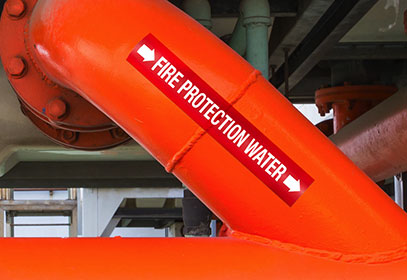
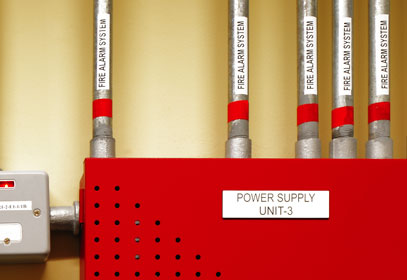
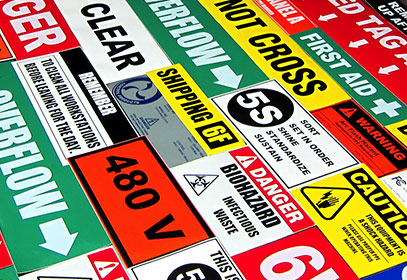
![ANSI Z535 [Updated Guide to Safety Signs & Labels]](https://www.creativesafetysupply.com/template/images/custom/resources-page/articles-ansi-z535.jpg)
